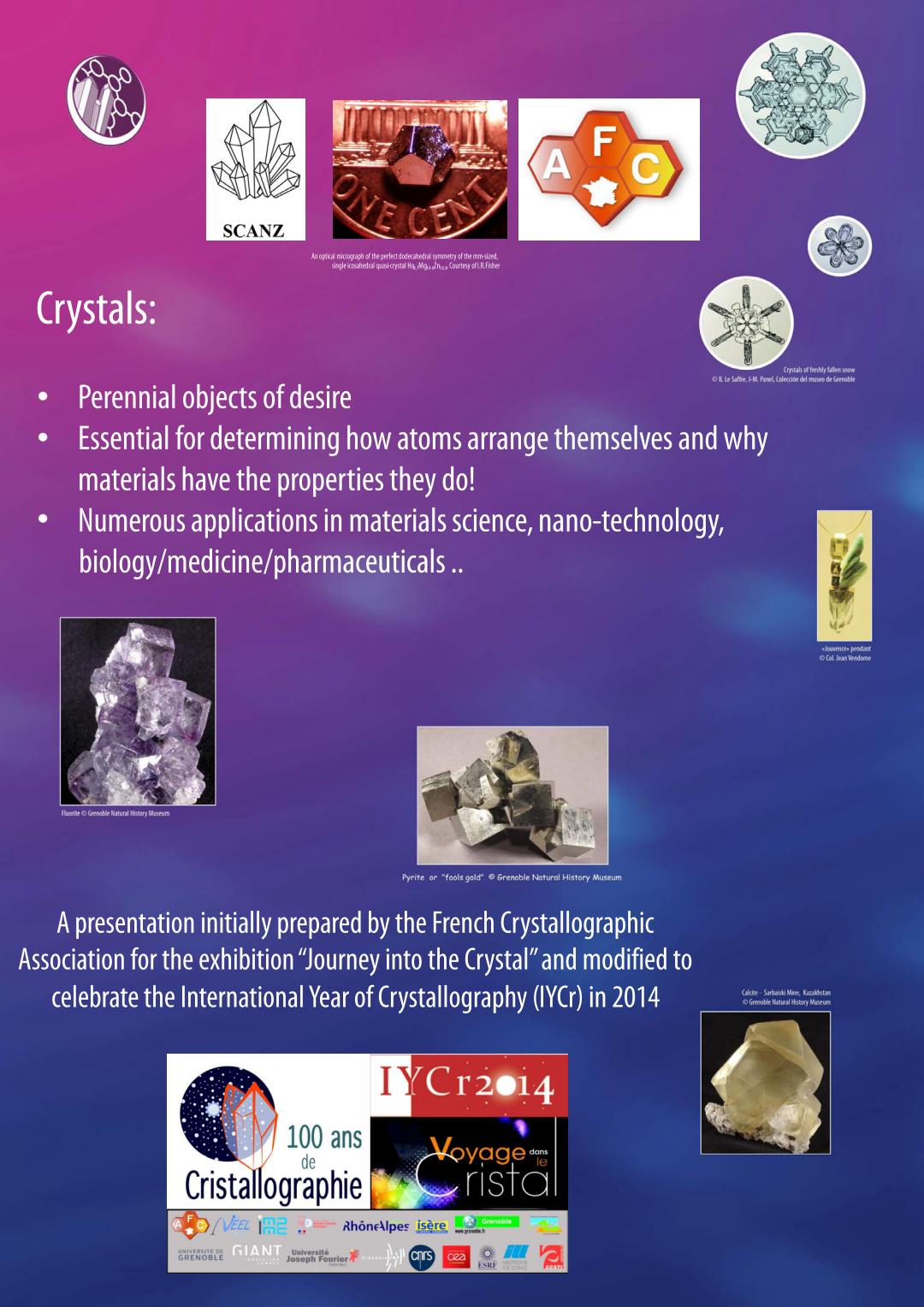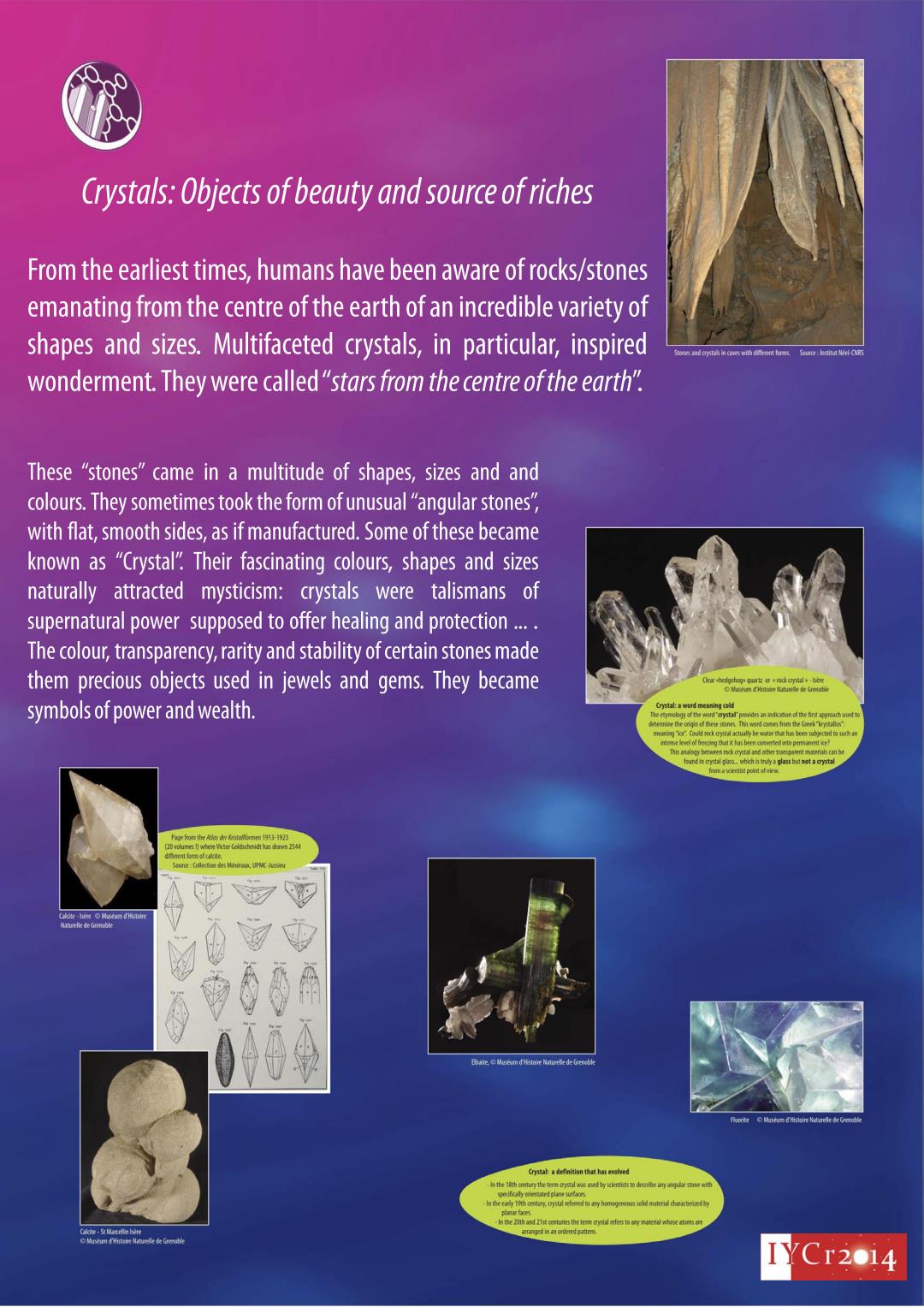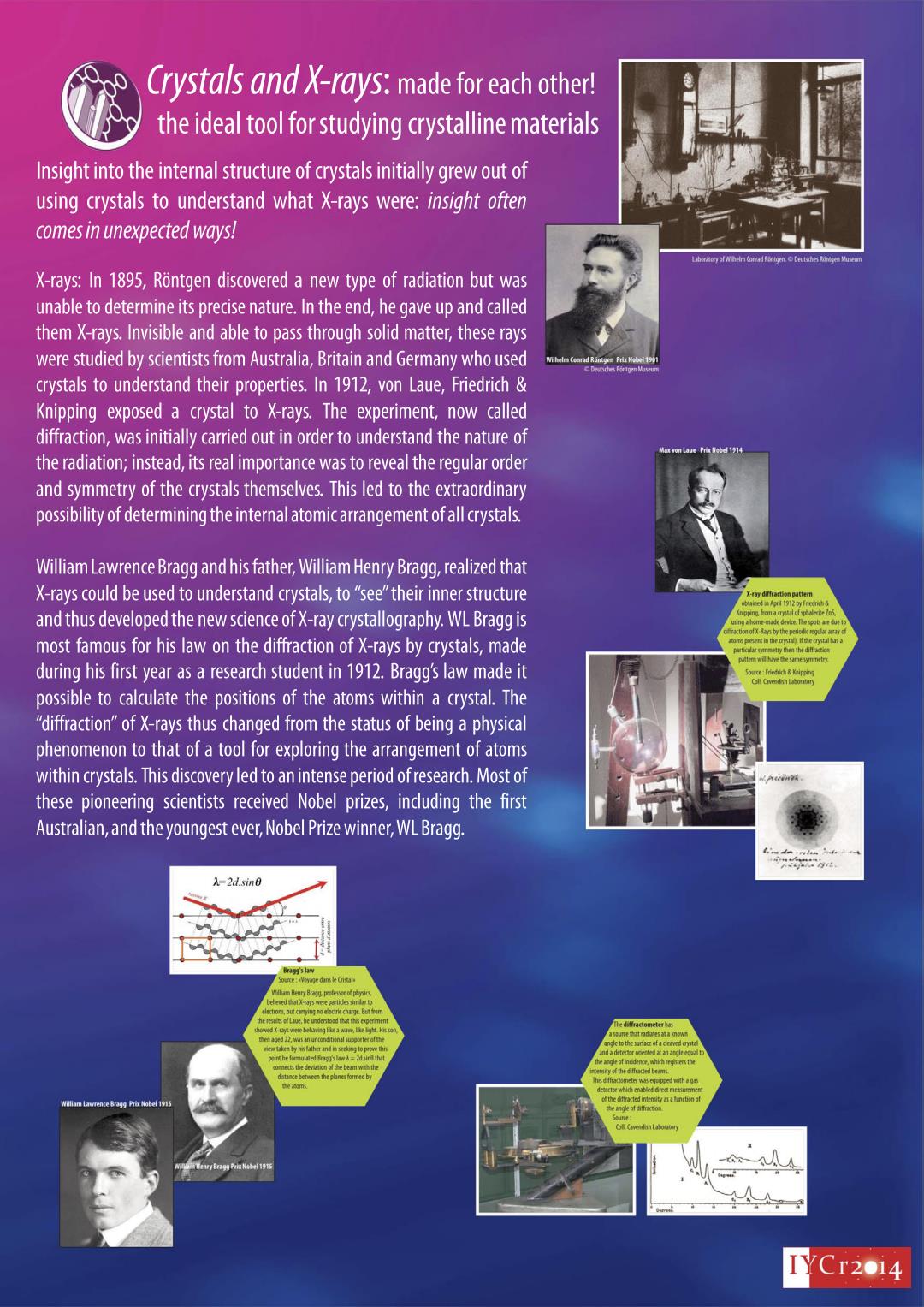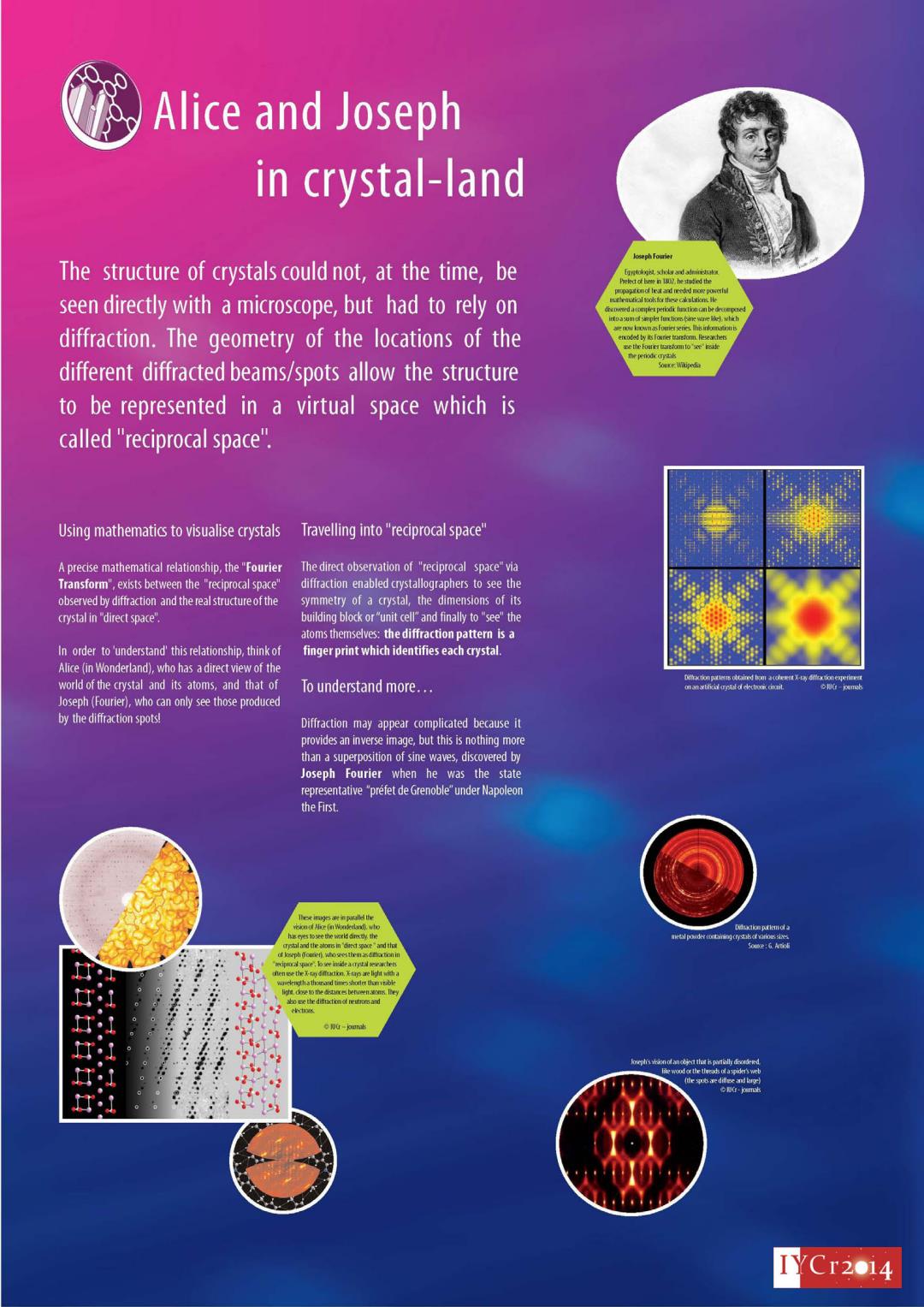
SCANZ Crystals: o&LeSafte-M Pan Perennial objects of desire Essential for determining how atoms arrange themselves and why materials have the properties they do! Numerous applications in materials science,nano-technology, biology/medicine/pharmaceuticals.. Pyrite or "fools gold"Grenoble Natural History Museum A presentation initially prepared by the French Crystallographic Association for the exhibition"Journey into the Crystal"and modified to celebrate the International Year of Crystallography (IYCr)in 2014 6 IYCr2●14 100 ans de Voyage Cristallographie rista b/组Rhonedlpes isere.度 品61AN卡洲伞画总
•••

Crystals:Objects of beauty and source of riches From the earliest times,humans have been aware of rocks/stones emanating from the centre of the earth of an incredible variety of shapes and sizes.Multifaceted crystals,in particular,inspired wonderment.They were called "stars from the centre of the earth". These "stones"came in a multitude of shapes,sizes and and colours.They sometimes took the form of unusual"angular stones with flat,smooth sides,as if manufactured.Some of these became known as "Crystal"Their fascinating colours,shapes and sizes naturally attracted mysticism:crystals were talismans of supernatural power supposed to offer healing and protection.... The colour,transparency,rarity and stability of certain stones made them precious objects used in jewels and gems.They became symbols of power and wealth. 滑 Crpstal:adefinonta hasevved hthea动0esnteendlonhonsneogglmtowdctendy CakiteMarelln bere rngdnnotkrda IYCr2oi4

"Angular Stones": The Birth of Crystallography During the Renaissance,a discussion began:do crystals stem from the growth of inert matter or are they somehow sculpted?Using his observations of the shape of quartz crystals,Steno,in the 17th Detahethoffuytaktryue century,was one of the first to imagine crystal growth.It was only during the 18th century,however,thatcrystallographers'formed a picture of the internal structure of crystals by focussing on their external geometry. It was the discovery of the"constancy of the angles"between the various faces of a given type of crystal,which first drove scientists to suggest that crystals must be made out of a stack of basic building blocks or bricks.This model allowed them to explain crystal faceting.The works of Steno,Rome de L'lsle and Hauy and numerous other scientists thereby gave rise to the new science of "crystallography" In the 19th century,German and French researchers introduced the concept of symmetry to classify crystals.They used mathematics to formalize their classification theory.Thus,by the beginning of the 20th century,even without being able to "see into"a crystal, crystallographers had developed the notion of atomic order and periodic repetition to understand both the external form of crystals as well as their symmetry. IYCr2●14

Crystals and X-rays:made for each other! the ideal tool for studying crystalline materials Insight into the internal structure of crystals initially grew out of using crystals to understand what X-rays were:insight often comes in unexpected ways! X-rays:In 1895,Rontgen discovered a new type of radiation but was unable to determine its precise nature.In the end,he gave up and called them X-rays.Invisible and able to pass through solid matter,these rays were studied by scientists from Australia,Britain and Germany who used crystals to understand their properties.In 1912,von Laue,Friedrich& Knipping exposed a crystal to X-rays.The experiment,now called diffraction,was initially carried out in order to understand the nature of the radiation;instead,its real importance was to reveal the regular order and symmetry of the crystals themselves.This led to the extraordinary possibility of determining the internal atomic arrangement of all crystals. William Lawrence Bragg and his father,William Henry Bragg,realized that X-rays could be used to understand crystals,to"see"their inner structure and thus developed the new science of X-ray crystallography.WL Bragg is most famous for his law on the diffraction of X-rays by crystals,made tn the pattee hesame symmetry during his first year as a research student in 1912.Bragg's law made it possible to calculate the positions of the atoms within a crystal.The 'diffraction"of X-rays thus changed from the status of being a physical phenomenon to that of a tool for exploring the arrangement of atoms within crystals.This discovery led to an intense period ofresearch.Most of these pioneering scientists received Nobel prizes,including the first Australian,and the youngest ever,Nobel Prize winner,WL Bragg. 入=2d.sim0 Hrase's taw e:ge dansna umHn8e与 2.ws an ncnd m Lawrence Bragg Pri Nob oll Cavendah Labotatory IYCr2●14

Alice and Joseph in crystal-land Josegh Fourier The structure of crystals could not,at the time,be seen directly with a microscope,but had to rely on diffraction.The geometry of the locations of the different diffracted beams/spots allow the structure to be represented in a virtual space which is called "reciprocal space". Using mathematics to visualise crystals Travelling into"reciprocal space A precise mathematical relationship,the "Fourier The direct observation of "reciprocal space"via Transform",exists between the "reciprocal space" diffraction enabled crystallographers to see the observed by diffraction and the real structure of the symmetry of a crystal,the dimensions of its crystal in "direct space". building block or"unit cell"and finally to"see"the atoms themselves:the diffraction pattern is a In order to 'understand'this relationship,think of finger print which identifies each crystal. Alice (in Wonderland),who has a direct view of the world of the crystal and its atoms,and that of To understand more... Joseph (Fourier),who can only see those produced by the diffraction spots! Diffraction may appear complicated because it provides an inverse image,but this is nothing more than a superposition of sine waves,discovered by Joseph Fourier when he was the state representative "prefet de Grenoble"under Napoleon the First. *61:0065006806. Gr-jomnal J IYCr2014